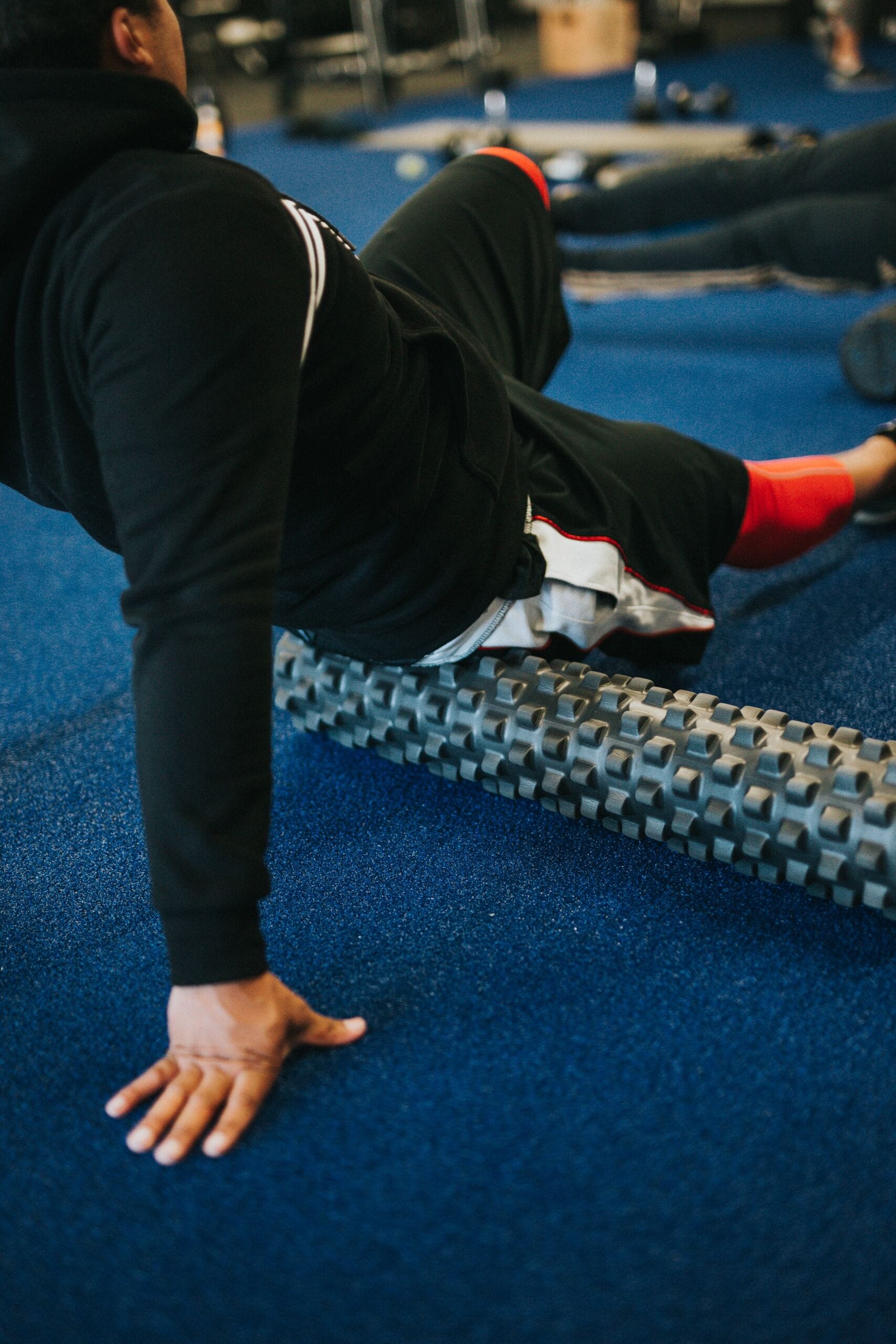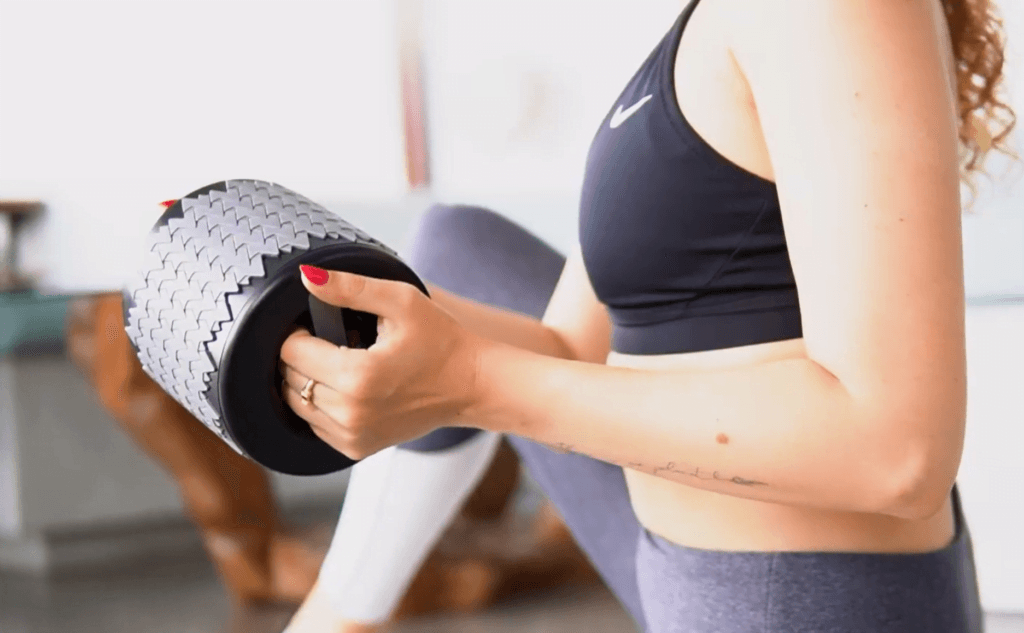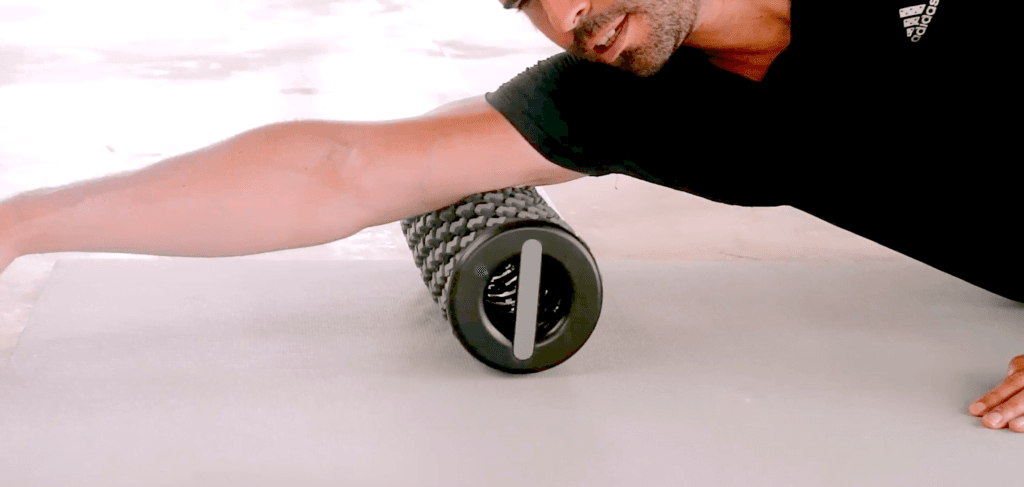Einführung
Das Faszienrollen, eine Technik, die sich an der Schnittstelle von Fitness und Wellness befindet, erfreut sich aufgrund ihrer bemerkenswerten Fähigkeit zur Verbesserung der körperlichen Gesundheit und Leistung großer Beliebtheit. Dieser umfassende Leitfaden taucht tief in die Welt des Faszienrollens ein, erkundet seine vielschichtigen Vorteile, gestützt auf wissenschaftliche Erkenntnisse und praktische Ratschläge.

Das Faszienrollen oder die selbstmyofasziale Freisetzung beinhaltet die Verwendung eines zylindrischen Werkzeugs, um Druck auf bestimmte Körperteile auszuüben. Diese einfache, aber effektive Methode zielt darauf ab, die Faszien, das Bindegewebe, das die Muskeln umhüllt, zu entspannen, die Mobilität zu verbessern und die Erholung zu fördern.
Die Wissenschaft hinter dem Rollen
Aktuelle Studien beleuchten die tiefgreifende Auswirkung des Faszienrollens auf die körperliche Gesundheit. Systematische Überprüfungen und kontrollierte Studien berichten konsistent über signifikante Verbesserungen der Flexibilität, reduzierte Muskelschmerzen und verbesserte Erholung nach dem Training. Durch Anregung des Blutflusses und Abbau von Verklebungen wird das Faszienrollen zu einem Eckpfeiler moderner Fitnessregimen.

Um die vollen Vorteile des Faszienrollens zu nutzen, muss man sich an richtige Techniken und Praktiken halten. Beginne mit sanftem Druck und erhöhe die Intensität allmählich, während sich dein Körper daran gewöhnt. Konzentriere dich auf Bereiche von Spannung oder Unbehagen, rolle langsam und verweile an empfindlichen Punkten. Kontinuität ist entscheidend – integriere das Faszienrollen in deine tägliche Routine für langanhaltende Ergebnisse.
Faszienrollen für jeden: Anpassung deines Ansatzes
Ob du ein Athlet bist, der die Leistung steigern möchte, oder eine Person, die Steifheit vom Schreibtischjob lindern möchte, das Faszienrollen bietet maßgeschneiderte Vorteile. Verschiedene Arten von Rollern erfüllen unterschiedliche Bedürfnisse – von dichtem Schaumstoff für die Arbeit an tiefer liegendem Gewebe bis zu weicheren Versionen für empfindliche Bereiche. Erkunde und finde den Roller, der sich mit deinen Zielen und deinem Komfortlevel in Einklang bringt.

Unzählige Menschen bezeugen die transformierenden Effekte des Faszienrollens. Von Läufern, die eine erhöhte Flexibilität und verkürzte Erholungszeiten erleben, bis zu Büroangestellten, die Linderung von chronischen Rückenschmerzen finden, sind die positiven Ergebnisse so vielfältig wie überzeugend. Diese Testimonials unterstreichen die universelle Anziehungskraft und Wirksamkeit des Faszienrollens.
Integration des Faszienrollens in dein Leben
Das Faszienrollen zu integrieren erfordert keine vollständige Lebensumstellung. Beginne mit einigen Minuten täglich und konzentriere dich auf die wichtigsten Muskelgruppen wie Rücken, Beine und Arme. Wenn du dich wohler fühlst, erweitere deine Routine, um zusätzliche Bereiche zu bearbeiten, und experimentiere mit verschiedenen Techniken.

Obwohl das Faszienrollen im Allgemeinen sicher ist, ist es entscheidend, es mit Achtsamkeit anzugehen. Vermeide das Rollen direkt über Gelenken oder verletzten Bereichen und konsultiere einen Fachmann, wenn du gesundheitliche Bedenken hast. Höre auf deinen Körper und passe Druck und Dauer an deine individuellen Bedürfnisse an.
Die Zukunft des Faszienrollens: Trends und Innovationen
Mit der steigenden Popularität des Faszienrollens nimmt auch die Innovation in diesem Bereich zu. Von vibrierenden Faszienrollen, die die Muskelaktivierung verbessern, bis zu kompakten, reisefreundlichen Designs entwickelt sich der Markt, um der wachsenden Nachfrage nach diesem vielseitigen Werkzeug gerecht zu werden.

Das Faszienrollen zeichnet sich als einfache, aber kraftvolle Praxis aus, die das Potenzial hat, deine körperliche Gesundheit zu revolutionieren. Indem du es in deine Routine integrierst, investierst du nicht nur in deine Fitness; du machst einen proaktiven Schritt in Richtung eines flexibleren, widerstandsfähigeren und lebendigeren Selbst. Integriere das Rollen und entsperre eine neue Ebene des Wohlbefindens.
Ziele auf 5-10 Minuten täglich ab und konzentriere dich dabei jeweils etwa 30 Sekunden bis 1 Minute auf jede Hauptmuskelgruppe.
Ja, das Faszienrollen kann Muskelschmerzen signifikant reduzieren und die Erholungszeiten nach dem Training verbessern.
Absolut, Anfänger können mit weicheren Rollern und sanftem Druck beginnen und sich allmählich steigern, wenn sie sich wohler fühlen.
Obwohl im Allgemeinen sicher, vermeide das Rollen über Gelenken oder verletzten Bereichen und konsultiere einen Profi bei gesundheitlichen Bedenken.
Berücksichtige deine Bedürfnisse und Schmerztoleranz. Weichere Roller eignen sich gut für Anfänger oder empfindliche Bereiche, während dichtere Roller besser für die Arbeit an tiefem Gewebe geeignet sind.
Auch interessant
Umfassender Leitfaden zur Triggerpunktmassage und ihren Vorteilen
Erfahre mehr über die Vorteile der Triggerpunktmassage, wie sie funktioniert und die Unterschiede zwischen Triggerpunktmassage...
Effektives Foam Rolling: Linderung von Rückenschmerzen durch langes Sitzen
Entdecke, wie Faszienrollen Rückenschmerzen lindern kann, die durch langes Sitzen verursacht werden. Erfahre mehr über...
Umfassender Leitfaden zur Behandlung und Vorbeugung des Läuferknies (ITBS)
Erfahre mehr über die Symptome, Ursachen und wirksame Behandlungen für das Läuferknie (ITBS). Praktische Tipps...
Verstehen und Managen von Bandscheibenvorfällen: Umfassender Leitfaden
Erfahre mehr über die Symptome, Ursachen und effektiven Behandlungen von Bandscheibenvorfällen. Entdecke praktische Tipps zur...
Effektive Tipps zur Linderung und Vorbeugung von Nackenschmerzen – Umfassender Leitfaden
Entdecke die Ursachen, Symptome und Heilmittel bei Nackenschmerzen. Lerne praktische Tipps zur Linderung und Vorbeugung...
Verstehen und Lindern von Brustschmerzen: Ursachen, Symptome und Lösungen
Erfahre mehr über die Ursachen und Symptome von Brustschmerzen und lerne wirksame Methoden zur Linderung...
Effektive Strategien zur Linderung und Vorbeugung von Knieschmerzen – Umfassender Leitfaden
Erkunde die Ursachen, Symptome und Heilmittel für Knieschmerzen. Lerne praktische Tipps zur Linderung und Vorbeugung...
Vollständiger Leitfaden zum Umgang mit Hüftschmerzen: Ursachen, Symptome und Behandlungen
Hüftschmerzen können dein tägliches Leben stark beeinträchtigen. Dieser umfassende Leitfaden deckt alles ab, von den...













